Introduction
The thesis aims to explore the role of Architecture, as a health machine, in the relationship between man and microbe in the greater microbial ecosystem.
Context
Microbes have traditionally been thought of as harmful and are a separate existence from the human body, until in the 19th century, when the presence of microbes is first discovered in our body. Many studies have informed us that only 1% of known microbial species in the environment are harmful. Most contribute to the microbe diversity within the human body, which is found to be the most important determinant of our health.
However, Architecture has consistently regarded microbes as harmful and are to be repelled at all costs. such a rudimentary approach of looking at microbes and man is clearly not sustainable. Indiscriminate sterilization has contributed to a rise in immune diseases amongst the urban population.
The thesis, therefore, seeks to subvert the traditional legacy of architecture as health machines- that are designed based on excluding microbes- by calling for Architecture to acknowledge man as part of the greater microbial ecosystem, and hence design for spaces to facilitate interactions between the two.
However, there remains public resistance to perpetuating microbial growth in the living environment due to fears of microbes becoming pathogenic if their growth is perpetuated, especially on surfaces.
Therefore, airborne transmission ought to be the primary mode of microbe transmission in this ecosystem, with surface transmission minimized but encouraged only for high touch surfaces. In addition, selected beneficial microbes in the living environment ought to be bred at a controlled manner.
Last, in light of how homes constitute a huge proportion of our lives, the thesis also aims to design a comprehensive microbe-friendly environment for the urban population, through a reinterpretation of the domestic home, called Microville.
Approach
It has been found that there are a total of 7 microbes beneficial to the urban population. These 7 microbes in turn consume human waste and other human by-products (e.g. CO2, dead skin, C02, etc) for growth. They are to be bred underground within microbe-niche containers in Microville with a constant supply of the above 2 nutrients.
Human waste shall be procured from the Residential blocks, whilst the other nutrients needed for microbial growth would be supplied as by-products of Common areas (aka Microbe Zones) paired to the respective microbe-niche containers. Microbes bred underground would eventually be released aboveground for acquisition by residents at the Common areas and the Residential areas.
However, not all 7 microbes are essential for all individuals. Due to our genetic makeup and differing lifestyles, individuals have different health conditions, and hence need to acquire certain microbes more than the others, to improve their condition.
Research has shown that the urban population is mainly plagued with 7 health risks- reflected by 7 health personas- stemming from the different lifestyles and genetic makeup. Each persona has to acquire a different set of microbes, and hence need a different microbial environment.
In light of how we spend most of our time within our own residential units, microbes released at the residential areas ought to be more persona-specific, whilst those released at the Common areas should be more generic. In addition, Personas that have similar microbial needs are to be allocated to the same housing block in Microville.
These microbes are to be procured by residents mainly through inhalation. Surface transmission is optimized only for surfaces with high transmission rates. This furniture would be redesigned and are pre-installed in every housing unit. The touch surfaces of the pre-installed furniture would also be clad with a material optimal for the microbe to be acquired – which is in turn, dependent on the health profile of the household.

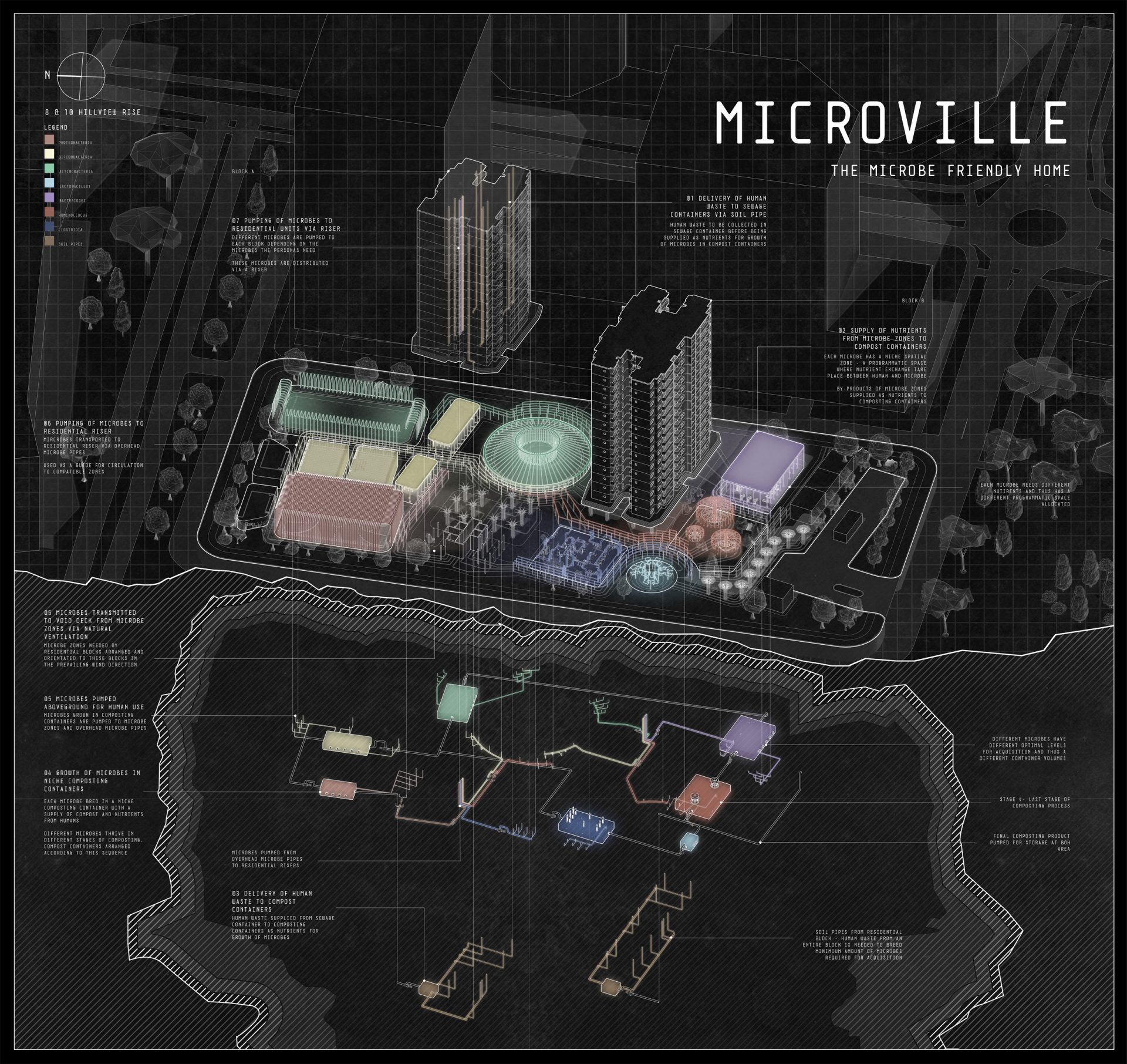
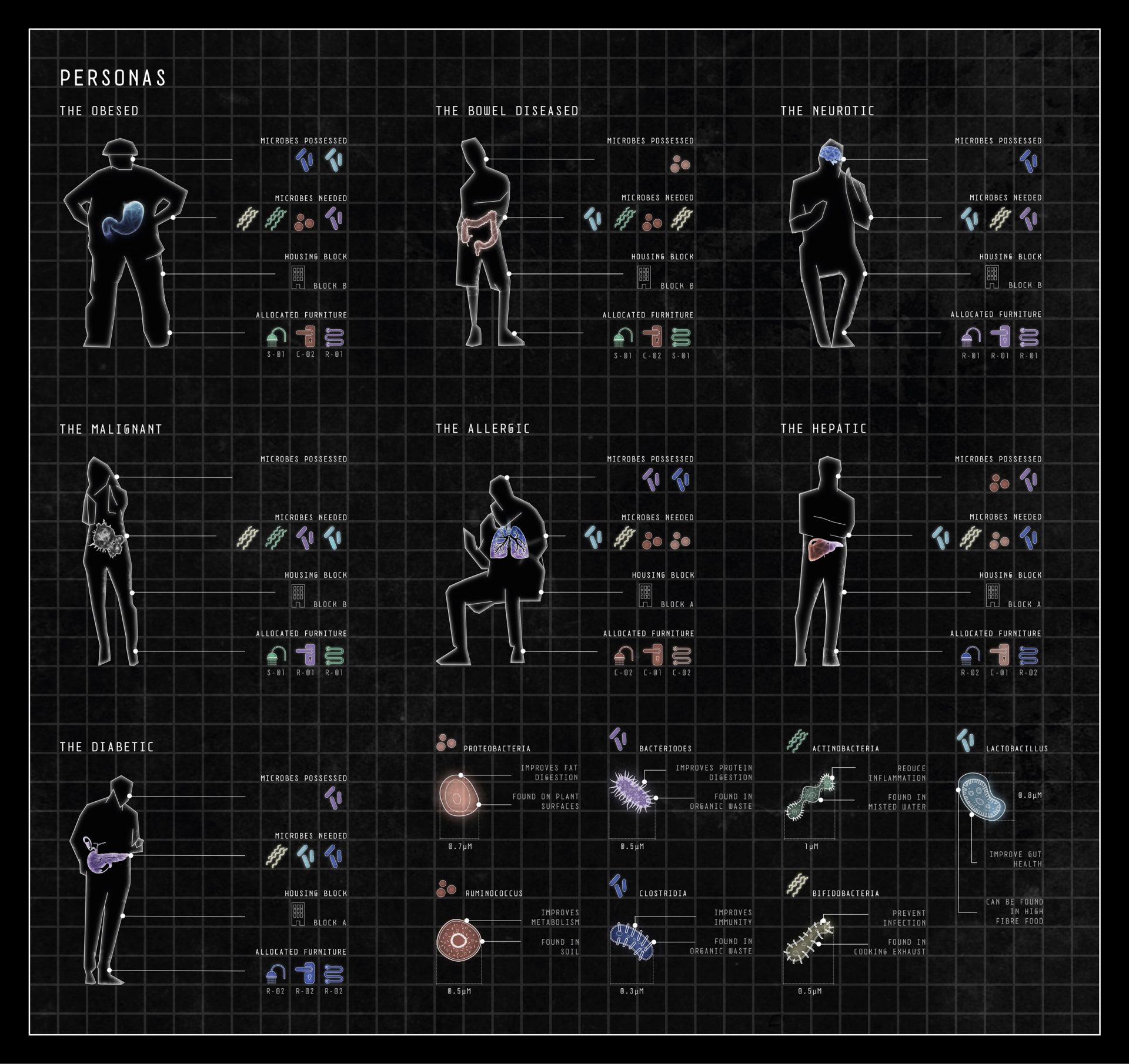
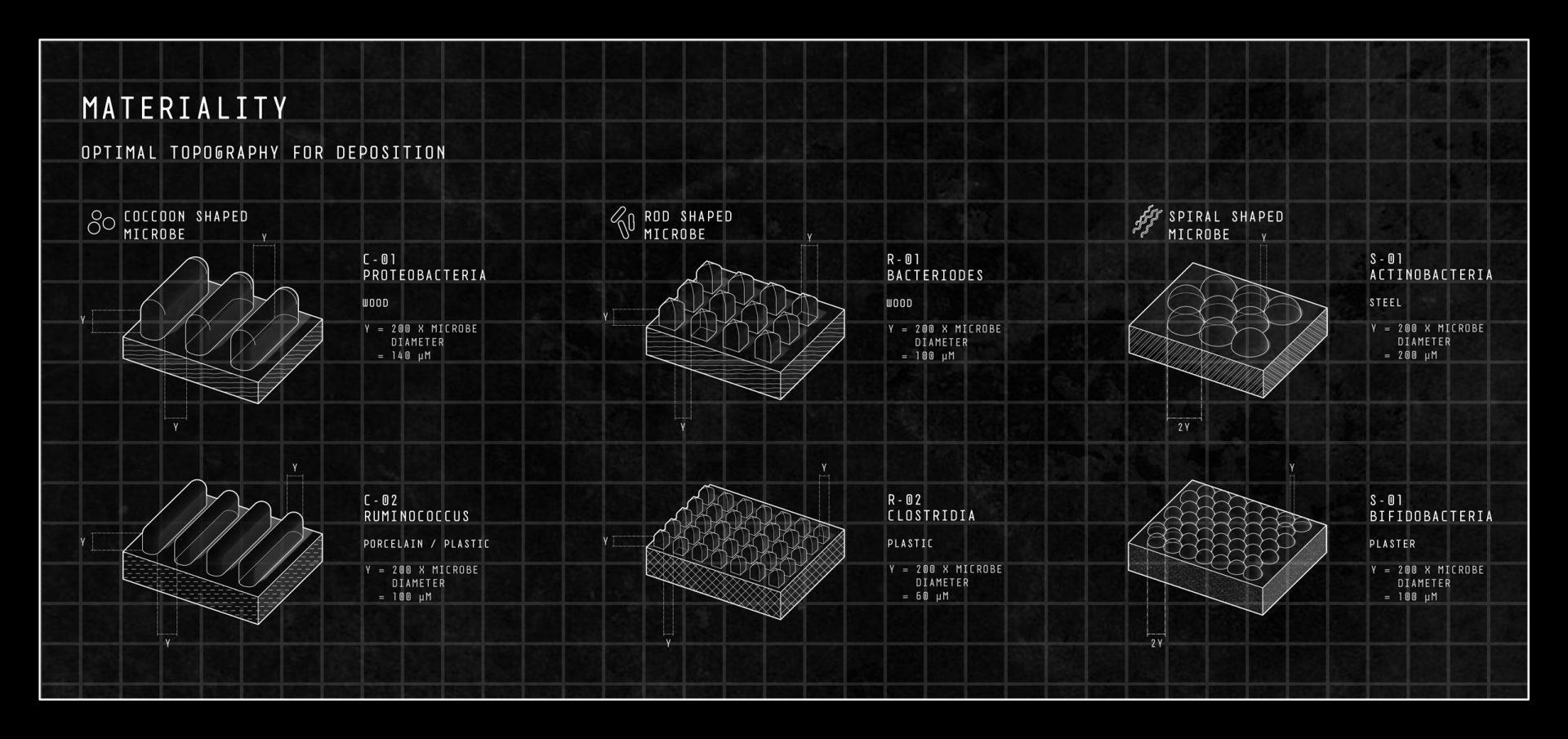
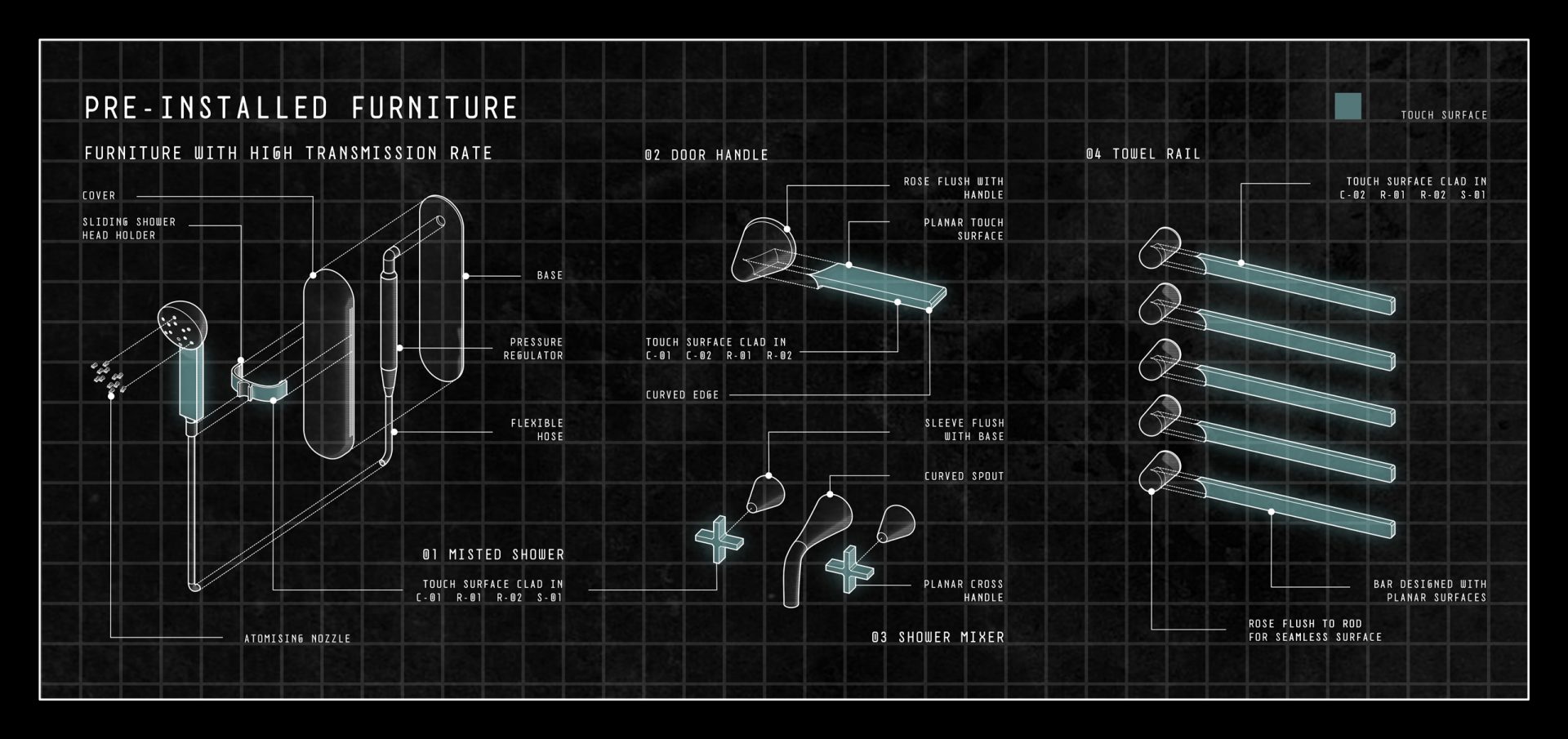
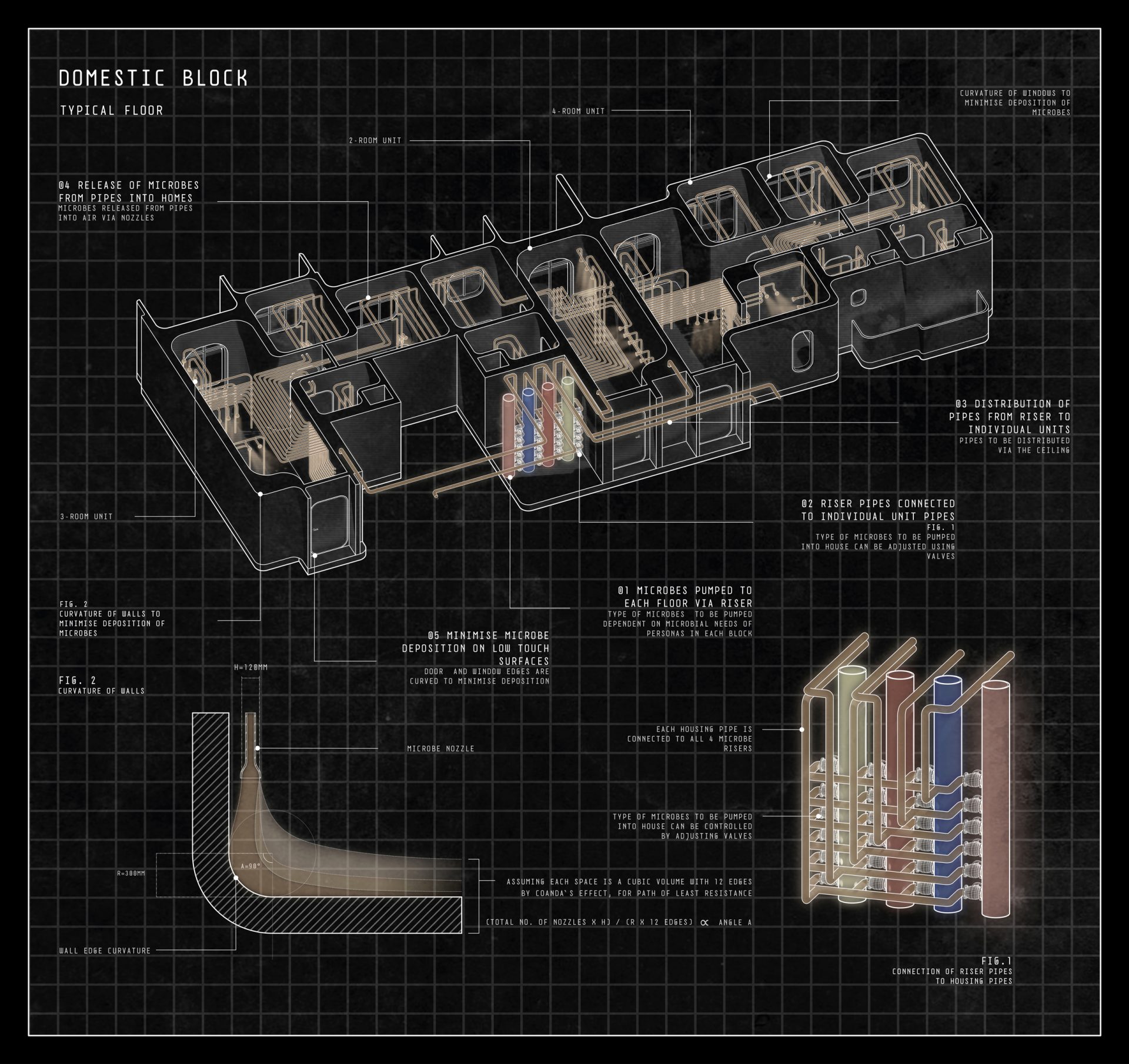
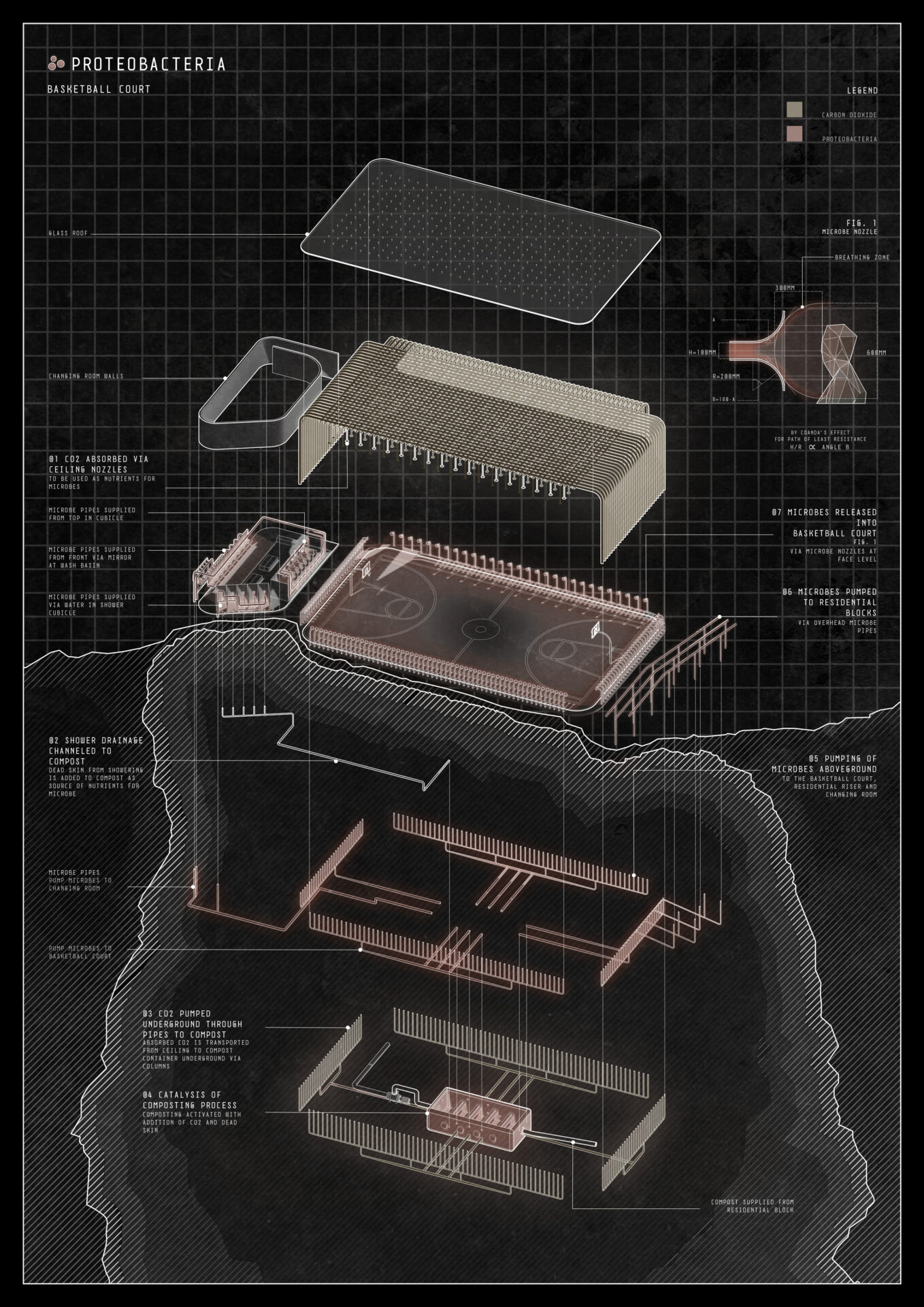


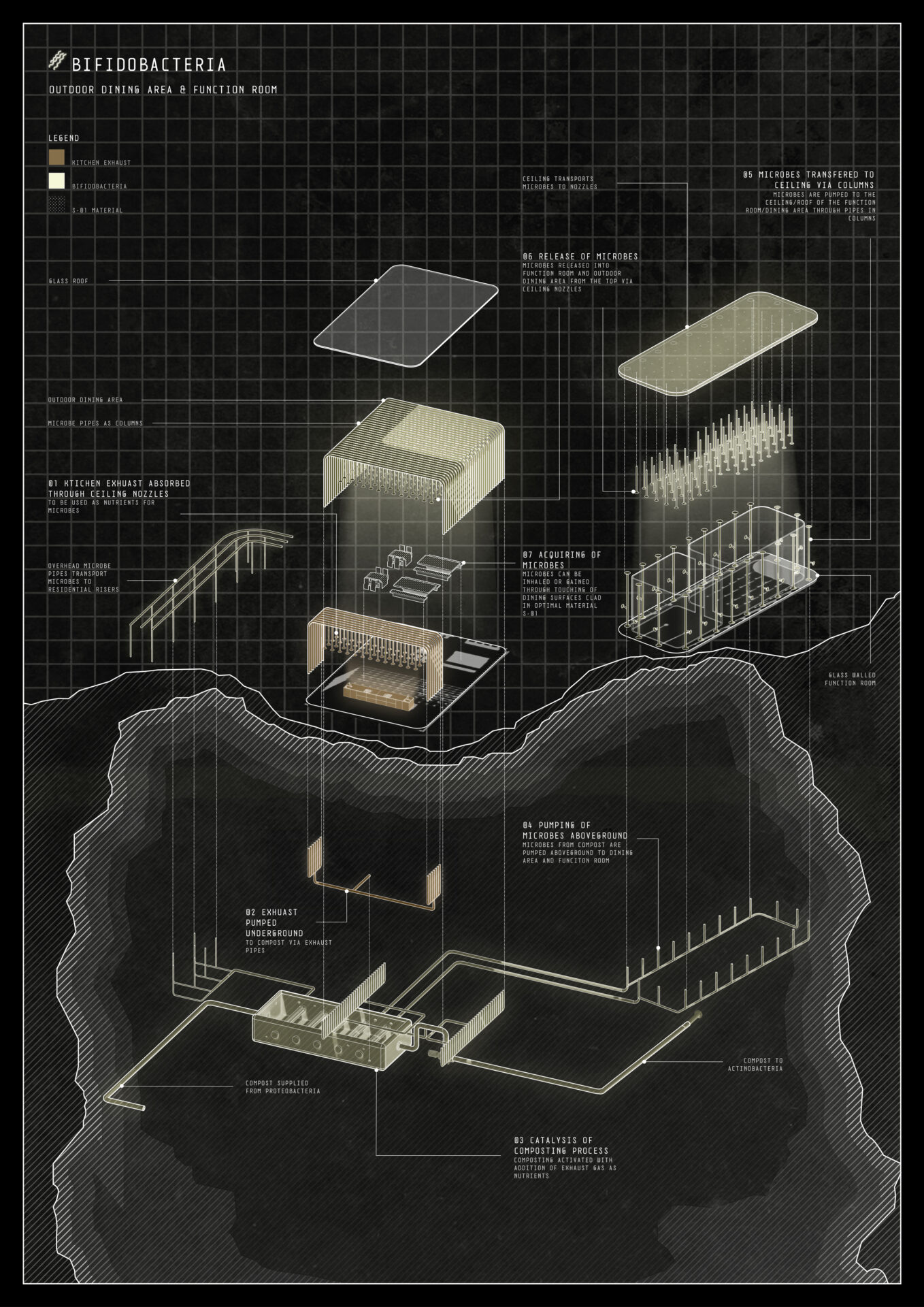
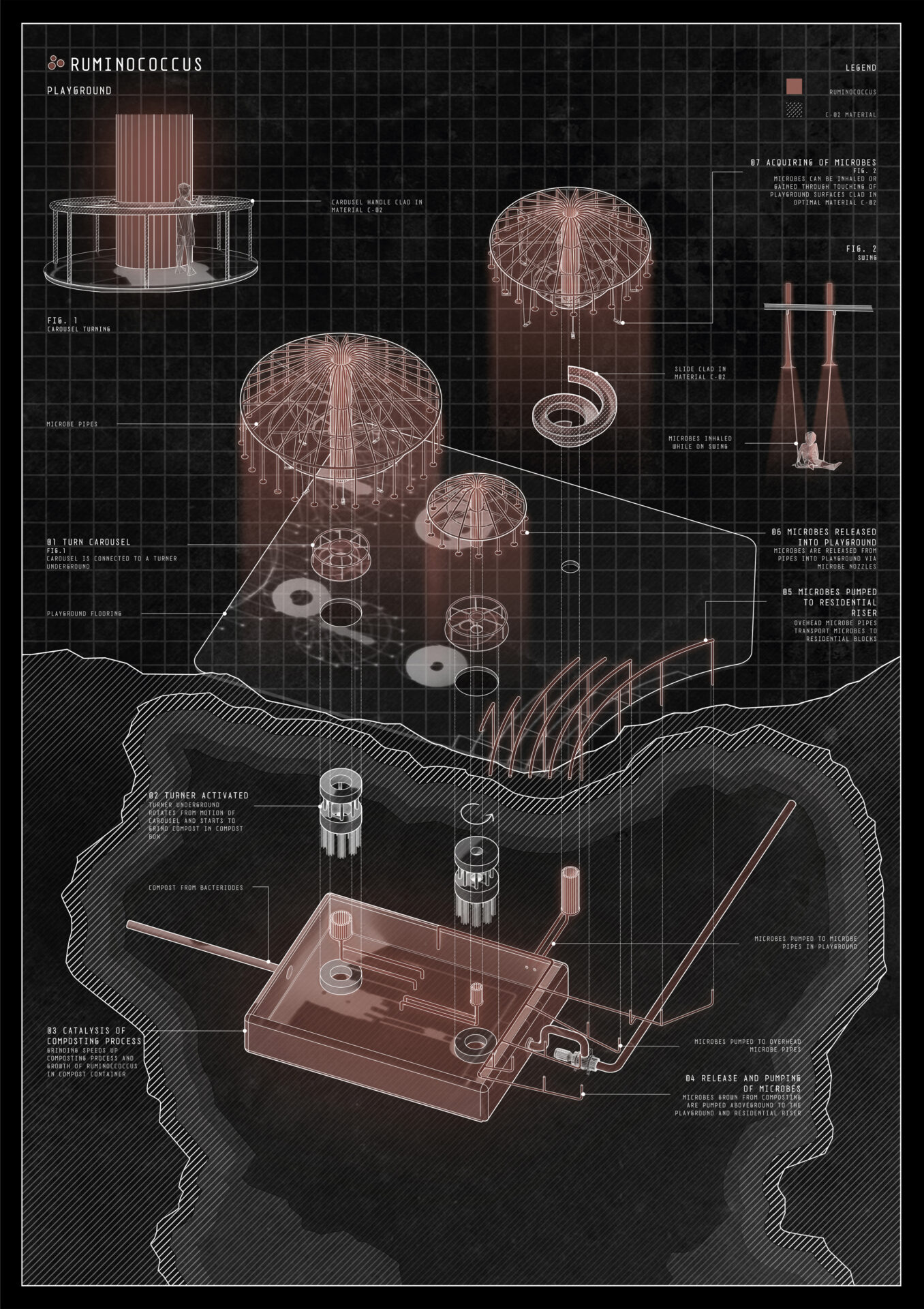
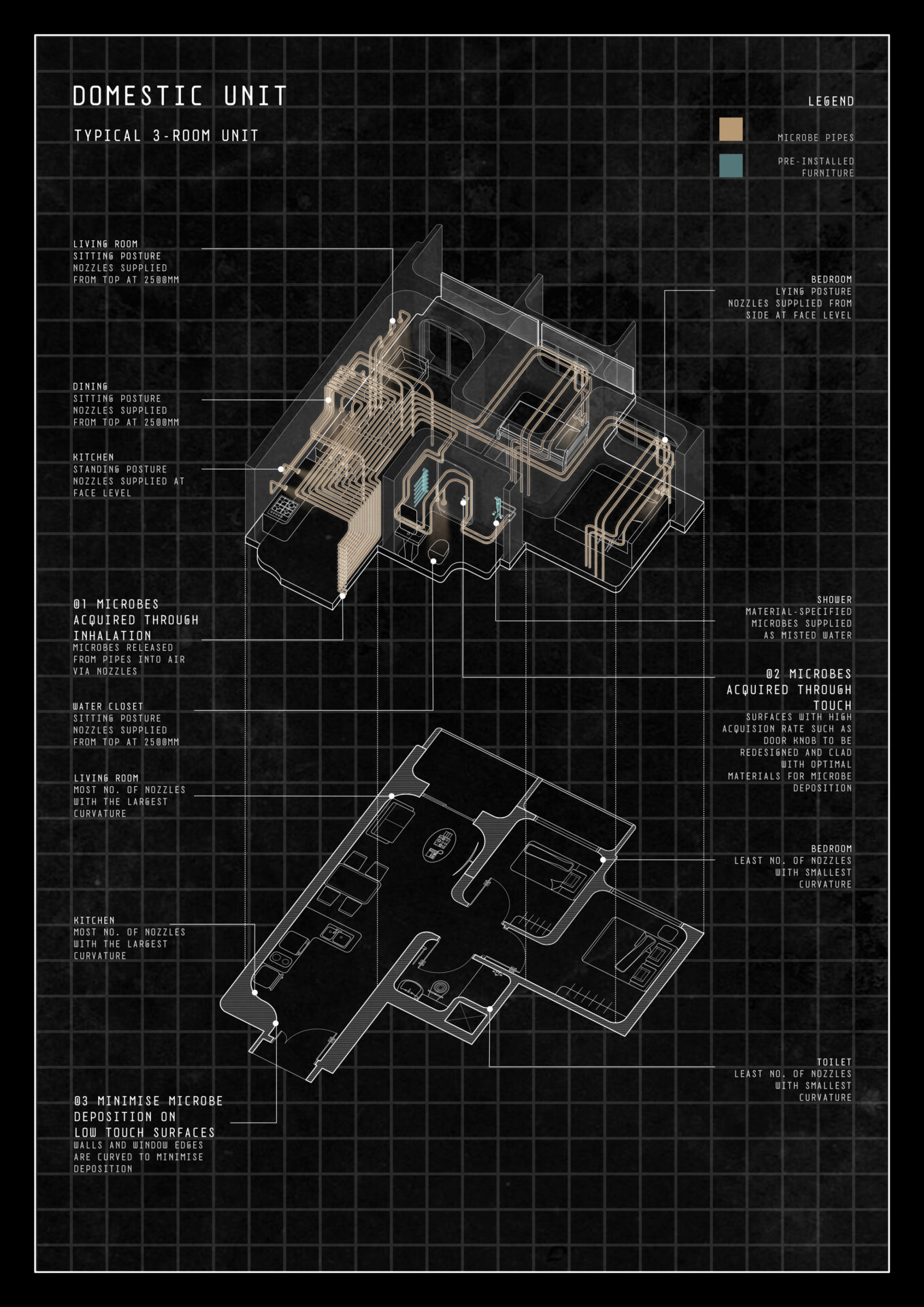

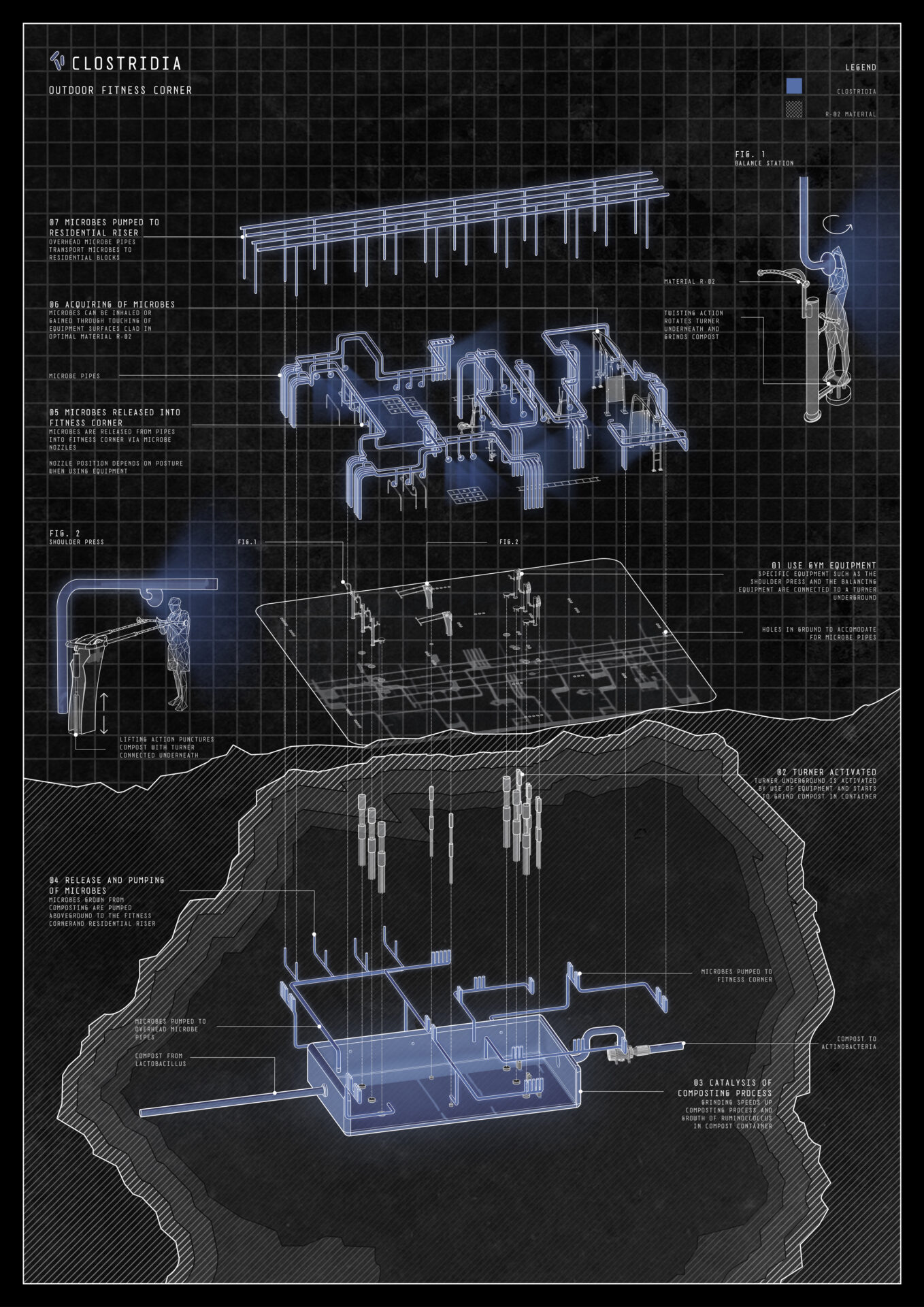
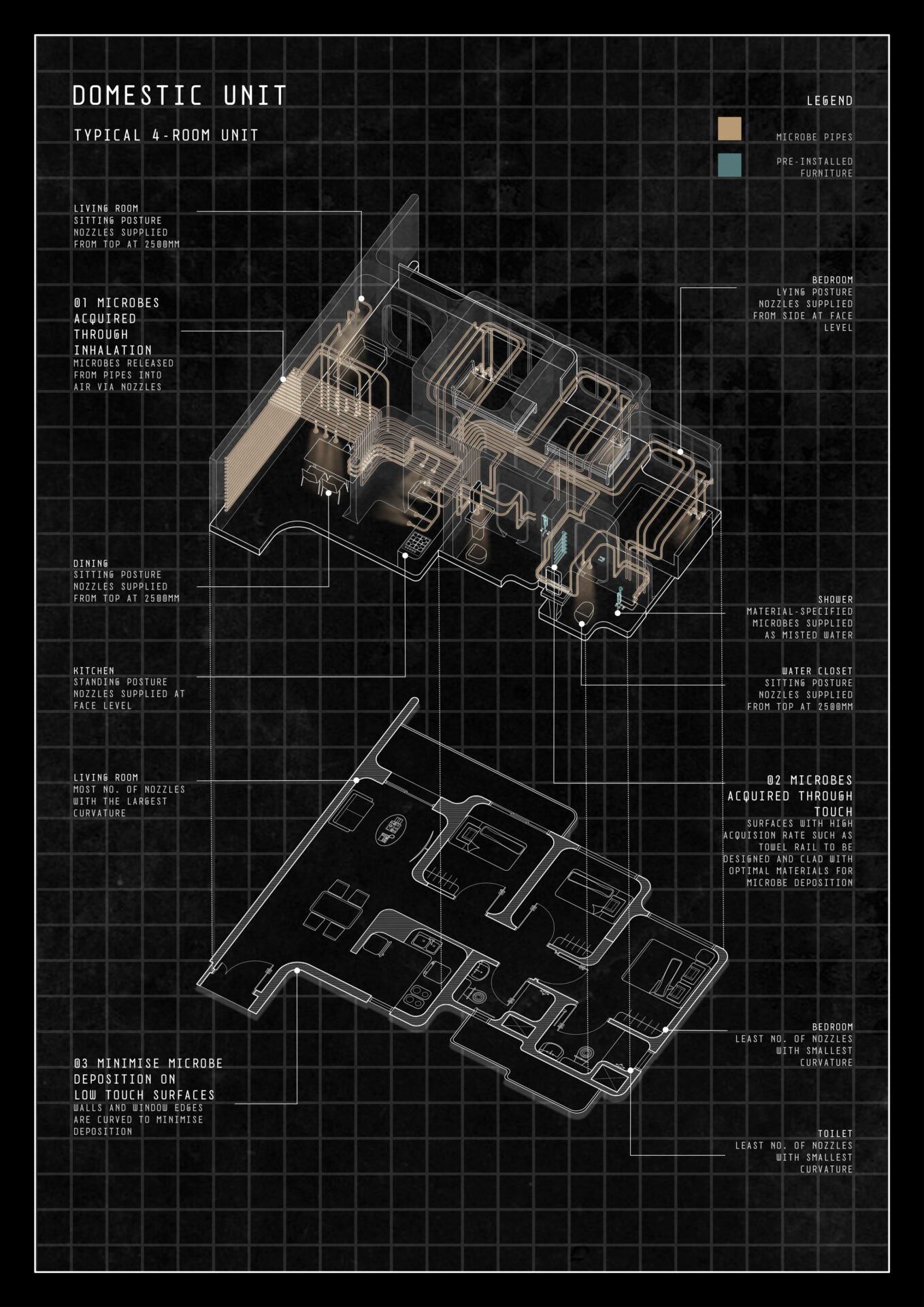
Supervisor's comments:
This thesis investigates the current multi species coexistence tendencies at a microbial scale where the human body is depicted as part of a larger microbial ecosystem. Taking the dwelling as a site of investigation and intervention, the proposal argues that microbes are a form of valuable resource to be included in the design of architecture; much like light and air. Beyond providing an architectural solution to better one’s microbial health, this thesis also endeavours to recalibrate modern architecture’s role as a health machine that insulates our bodies against harmful microbes, even though they only account for 1% of the whole microbial ecosystem.
- Ar. Chaw Chih Wen